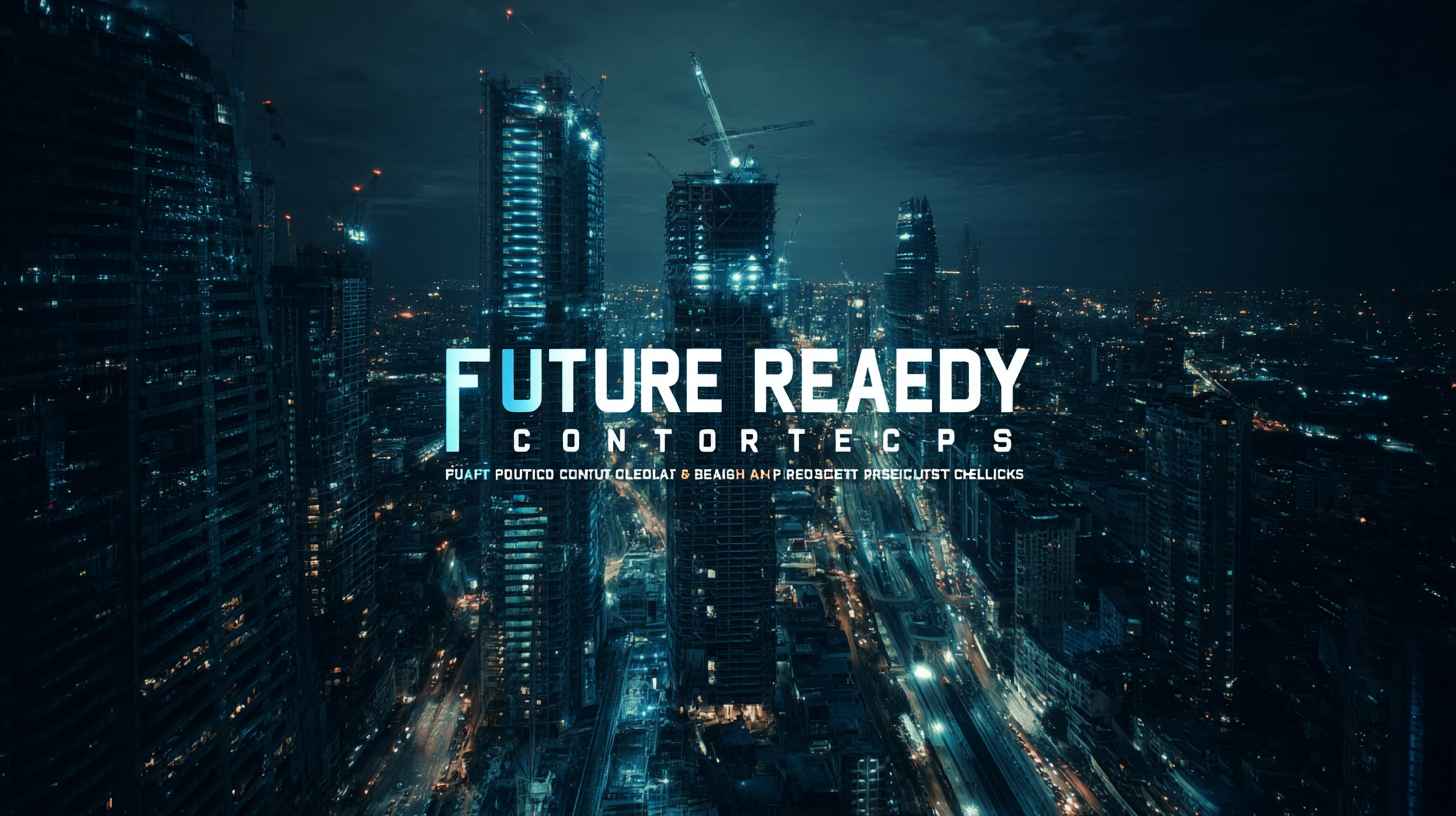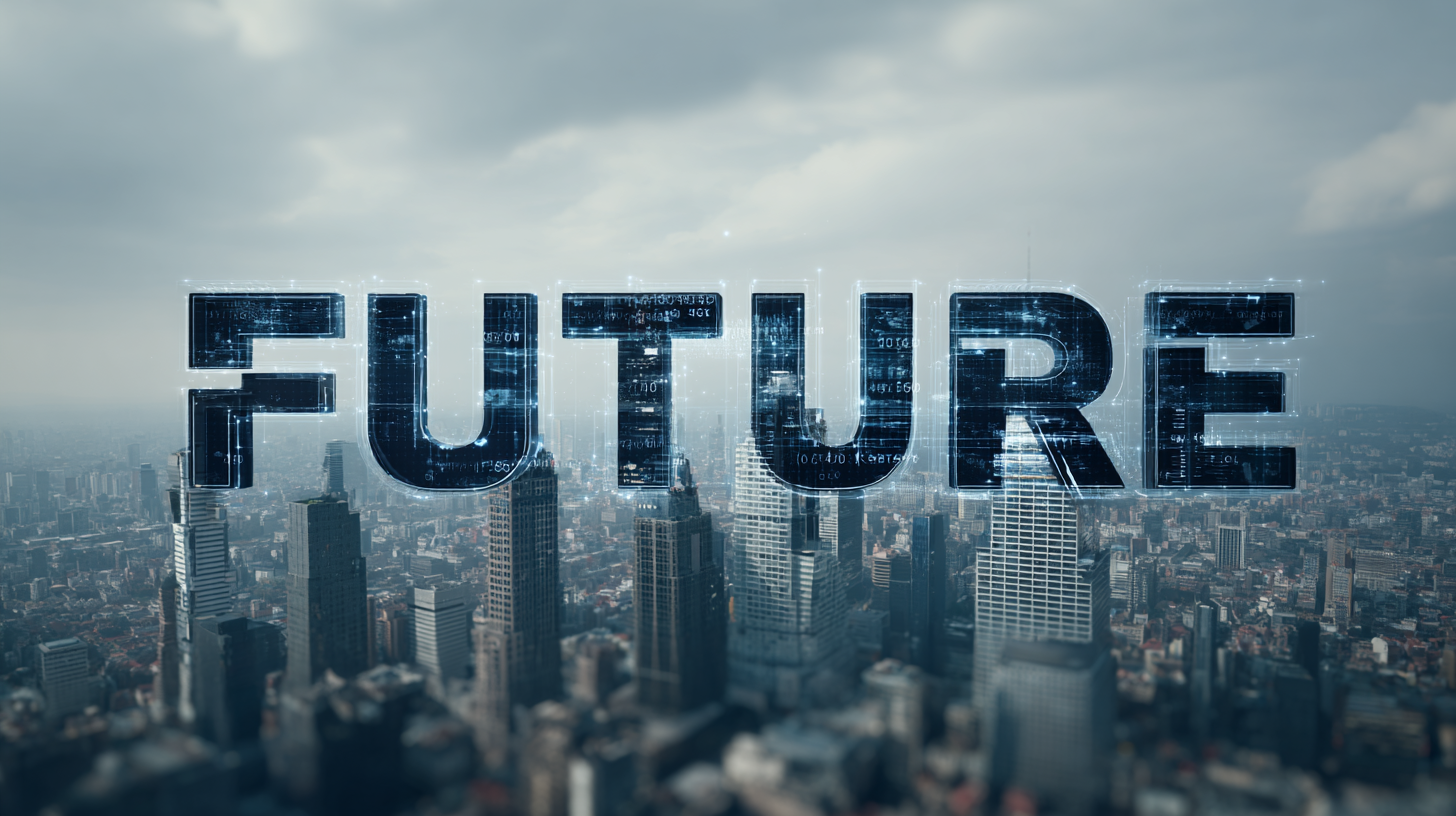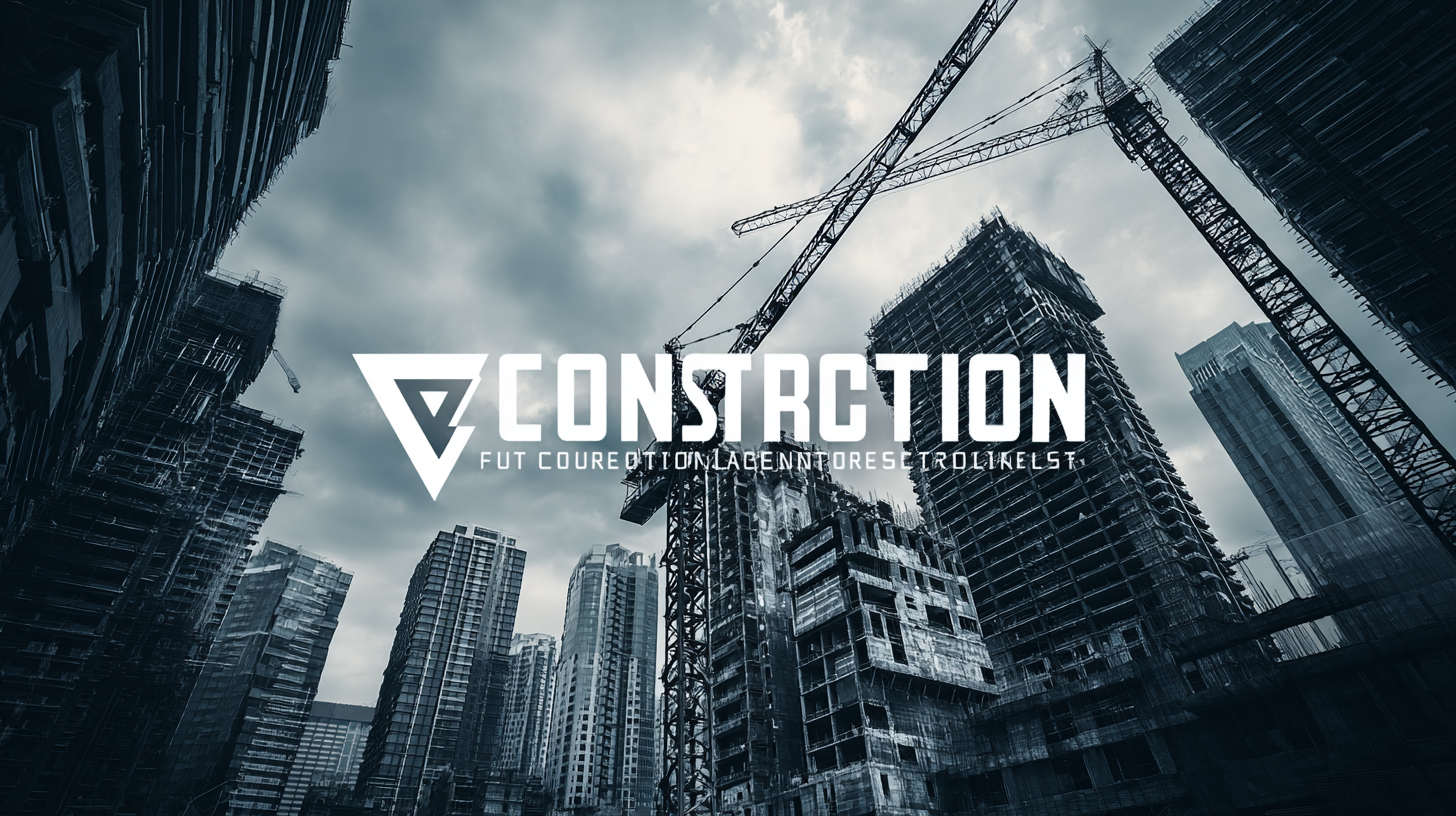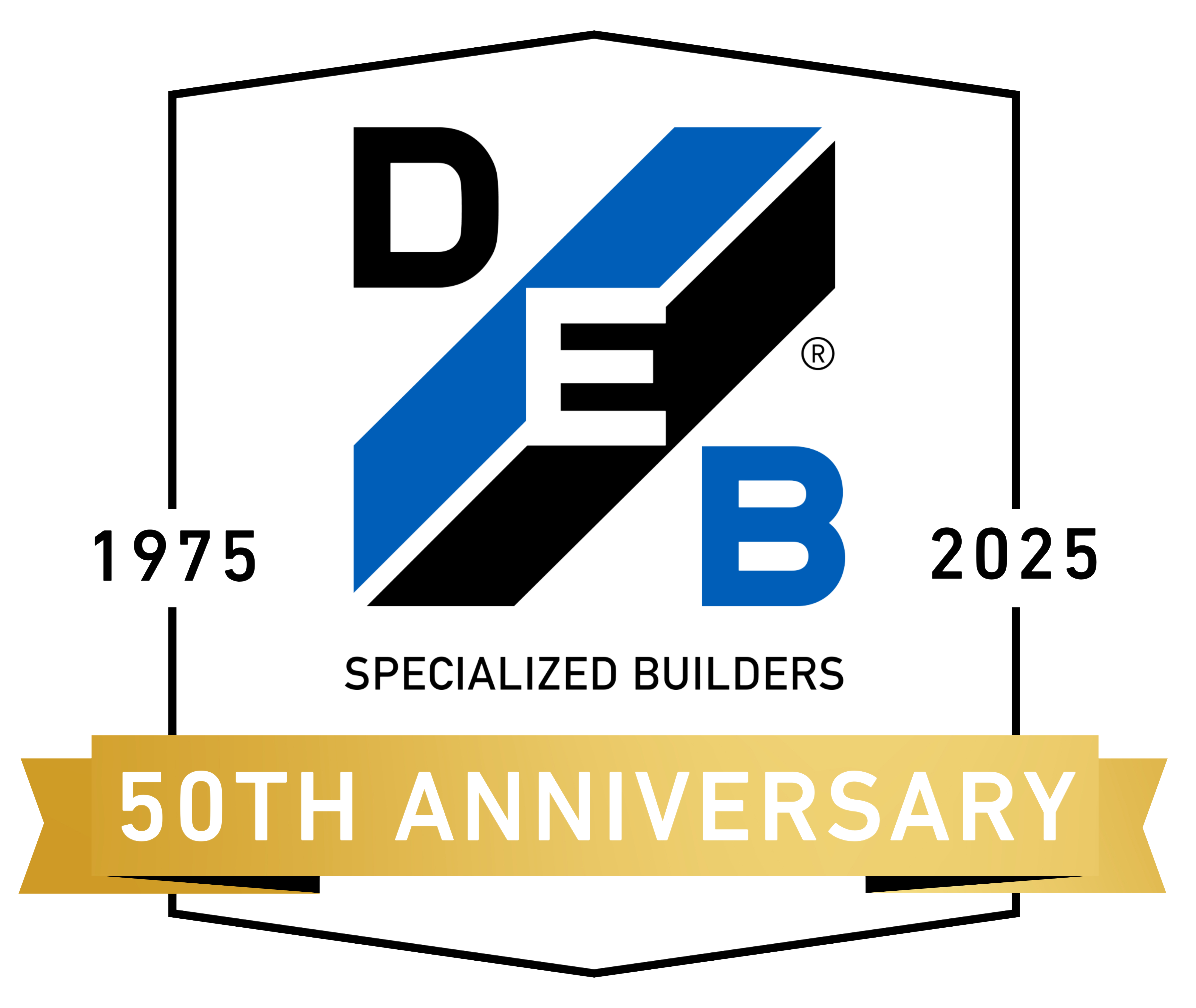Future Ready Construction Projects Essential Technology Trends and Actionable Checklist for 2025
In the rapidly evolving landscape of the construction industry, staying ahead of the curve is essential for the success of any construction project. As we approach 2025, technological advancements and innovative practices are reshaping how projects are planned, executed, and managed. One critical aspect that can significantly influence the outcome of a construction project is the selection of high-quality suppliers. Knowing how to find reliable and skilled vendors not only ensures the timely delivery of materials and services but also enhances overall project efficiency and sustainability. This blog will explore essential technology trends transforming the construction sector, coupled with an actionable checklist aimed at guiding project managers in identifying and partnering with top-notch suppliers. By leveraging these insights, stakeholders can position their construction projects for success in an increasingly competitive environment.

Emerging Technologies Shaping the Future of Construction in 2025
The construction industry is on the brink of a significant transformation, largely driven by emerging technologies that will shape operations in 2025 and beyond. Digital transformation is no longer just a trend; it is becoming a necessity for construction firms aiming to enhance efficiency and competitiveness. Key technologies such as Building Information Modeling (BIM), augmented reality (AR), and artificial intelligence (AI) are redefining project management and collaboration on construction sites. These advancements enable real-time data sharing and improve decision-making processes, thus streamlining operations and reducing costs.
As firms look to implement these technologies, it's crucial to adopt clear strategies that promote digital integration. Training and upskilling the workforce will be essential to harness the full potential of these tools. Additionally, prioritizing cybersecurity measures will ensure that sensitive data remains protected as digital platforms become increasingly prevalent. The actionable checklist for 2025 should include steps for evaluating current technological capabilities, investing in scalable solutions, and fostering a culture that embraces innovation. By focusing on these emerging technologies and implementation strategies, construction businesses can pave the way for a more efficient and future-ready industry.
Integrating AI and Automation for Enhanced Project Efficiency
The construction industry stands on the brink of a revolutionary transformation, with AI and automation leading the charge towards enhanced project efficiency. As we look towards 2025, integrating these technologies will not only streamline processes but also minimize costs and reduce timelines. AI algorithms can analyze vast amounts of data, predicting project outcomes with remarkable accuracy. This allows project managers to make informed decisions and allocate resources more efficiently, ensuring that projects stay on track and within budget.
Automation further complements AI by handling repetitive tasks that consume precious human resources. For instance, robotic process automation can manage administrative duties, such as scheduling and reporting, freeing up professionals to focus on higher-level strategic planning and problem-solving. Additionally, the use of automated machinery and drones in construction sites can expedite labor-intensive tasks while enhancing safety protocols. By embracing this technological evolution, construction companies position themselves to tackle the complexities of modern projects, ensuring they remain competitive in an ever-evolving landscape.
Future Ready Construction Projects Essential Technology Trends and Actionable Checklist for 2025
| Technology Trend | Description | Actionable Steps | Expected Benefits |
|---|---|---|---|
| AI for Project Management | Utilizing AI tools for planning, resource allocation, and risk management. | Integrate AI software in project management processes and train staff. | Improved decision-making and efficiency in resource management. |
| Automation in Construction | Deploying automated machinery for repetitive tasks like bricklaying or painting. | Invest in automated equipment and upskill workforce for operation. | Increased productivity and reduced labor costs. |
| Building Information Modeling (BIM) | Using 3D modeling to improve the design and construction process. | Implement BIM software and ensure cross-discipline collaboration. | Enhanced visualization and reduced rework. |
| Drones for Site Surveying | Using drones to perform aerial surveys and inspections. | Acquire drones and train teams for safe and effective usage. | Faster data collection and improved site safety. |
| Sustainability Tech | Implementing green technologies and sustainable practices in building. | Research and integrate sustainable materials and methods. | Reduced environmental impact and compliance with regulations. |
Sustainable Construction: Adopting Green Technologies for a Better Tomorrow
As the construction industry looks towards 2025, adopting sustainable practices and green technologies is not just an option but a necessity. The integration of renewable materials, energy-efficient systems, and innovative waste management solutions are at the forefront of this transformation. By leveraging technologies such as Building Information Modeling (BIM) and the Internet of Things (IoT), projects can significantly reduce their carbon footprint and enhance resource efficiency. These advancements pave the way for smarter buildings that are not only more efficient but also more resilient to the changing climate.
Moreover, sustainable construction goes hand in hand with social responsibility, reflecting a commitment to bettering the environment and the communities where we build. Implementing green technologies like solar panels, rainwater harvesting, and energy-efficient HVAC systems creates holistic benefits—lower operational costs, improved air quality, and healthier living spaces. As industry stakeholders focus on meeting regulatory demands and satisfying consumer preferences for environmentally friendly solutions, a landscape shift towards sustainability becomes inevitable, positioning the construction sector to thrive in an eco-conscious future.
The Role of IoT and Smart Devices in Modern Construction Practices
The construction industry is undergoing a significant transformation, driven by the integration of IoT (Internet of Things) and smart devices. These technologies are revolutionizing how construction projects are planned, executed, and managed. Smart sensors and connected devices are being deployed on job sites to monitor real-time data such as temperature, humidity, and equipment performance. This constant stream of information not only enhances safety and efficiency but also reduces costs associated with project delays and resource mismanagement.

In modern construction practices, IoT plays a crucial role in facilitating communication between various stakeholders, including engineers, architects, and contractors. With the help of smart devices and applications, teams can collaborate more effectively, accessing shared data anywhere, anytime. For instance, wearables equipped with IoT capabilities can track worker locations and health metrics, improving overall site safety. As we approach 2025, embracing these technologies will be essential for construction firms aiming to remain competitive and resilient in an ever-evolving landscape.
Developing a Future-Ready Workforce: Skills for Upcoming Trends in Construction
The construction industry is on the cusp of a technological revolution, and developing a future-ready workforce is essential. As we look towards 2025, industry professionals must hone skills that align with emerging trends such as automation, artificial intelligence, and sustainable practices. Understanding how these technologies impact project execution and completion will be pivotal in maintaining competitive advantage.
**Tip:** Embrace continuous learning by enrolling in training programs focusing on the latest construction technologies. This could include courses on Building Information Modeling (BIM), which enhances collaboration and efficiency through 3D modeling, or workshops on the use of drones for site surveys and inspections. Staying updated will enable workers to effectively integrate new tools into their daily tasks.
**Tip:** Foster a culture of adaptability within your teams. Encourage cross-disciplinary teamwork, allowing employees from different specialties to share insights and best practices. This diverse approach not only enhances problem-solving capabilities but also prepares your workforce to quickly pivot towards new technology trends as they emerge.

